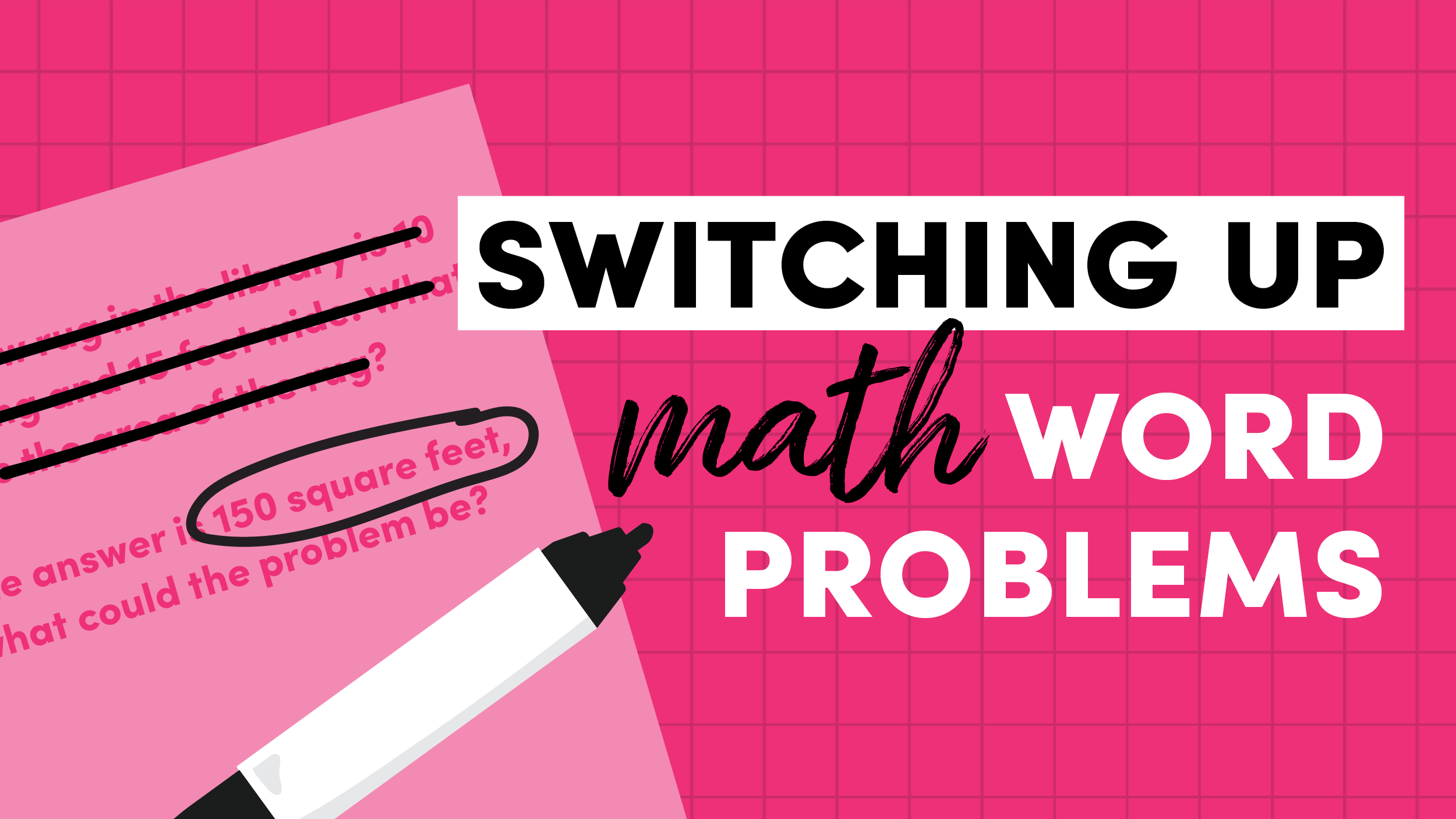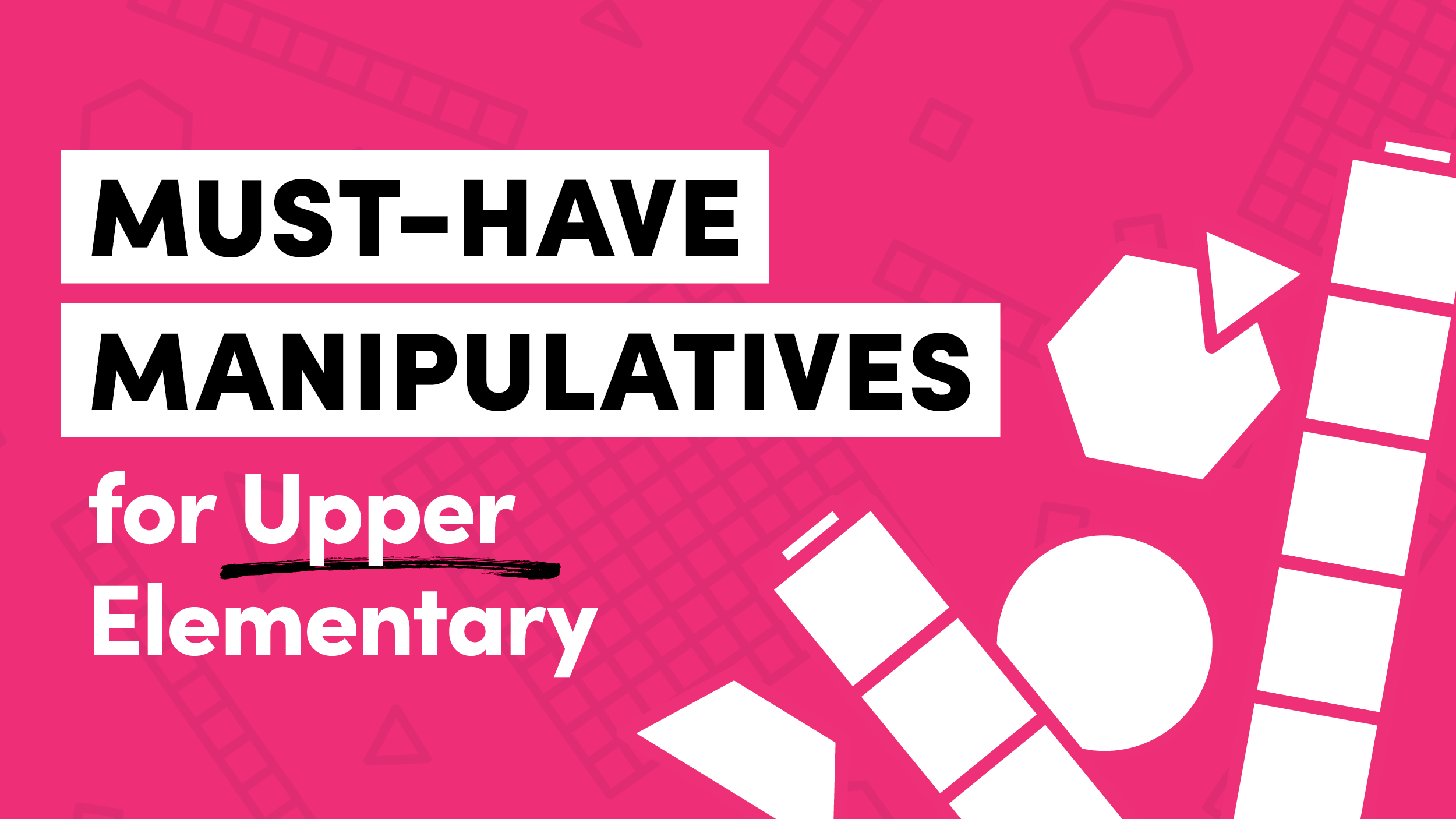5 Tips to Teach Fractions in 4th & 5th Grade
Teaching fractions in 4th and 5th grade often feels scary, especially if your own experience learning fractions in school left you confused and frustrated. But it doesn’t have to be that way for your students! You can turn fractions into a concept you love to teach and your students love to learn about. Here are my top five tips to make fractions more approachable, engaging, and meaningful in your 4th- and 5th-grade classroom.
4 Tips to Boost Student Engagement When Teaching Math
If you’re frustrated because your students just aren’t engaged in your math lessons, you’re not alone. I’ve been there too, and the good news is that it’s easy to fix! In this post, I share four free, easy-to-implement strategies that help you quickly boost engagement in your math classroom.
A Teacher’s Journey to Math Confidence and Empowerment
Read about fifth-grade teacher Crystal Harris, whose early experiences with math left her defeated, insecure, and confused. Through a journey of self-reflection and personal learning, Crystal gained confidence and became an empowered and engaged math teacher. If you’re feeling unsure and nervous about teaching math, this story is for you!
3 Essential Tips to Become an Effective Math Teacher-Leader
"3 Essential Tips to Become an Effective Math Teacher-Leader" offers actionable strategies for math coaches, specialists, coordinators, and team leaders looking to build trust and credibility with their colleagues. It helps teacher-leaders foster trust and create a stronger connection with their teams and with resistant colleagues.
How to Create Math Toolkits for Your Students
If students end up not being able to share supplies, creating math toolkits for each student will be essential! Giving students access to both their own set of math manipulatives and math tools will be really helpful in keeping the learning hands-on for students.
Getting Started with Virtual Math Manipulatives
Just because working with physical manipulatives may be my preference for students, doesn’t mean that virtual manipulatives can’t play an important role in our classrooms too!
Building Number Sense with Decimals
Building number sense with decimals is no different. We have to give students plenty of experiences seeing and working with decimals in different ways in order to see increased number sense with decimals.
Using Number Choice to Differentiate Whole Group Math Instruction
The beauty in this strategy is that it offers students a problem that is appropriate for where they are currently at in their learning. It also gives them choice, which immediately increases engagement and gives them ownership in their learning.
Supporting Students Who Don’t Know Their Multiplication Facts
We often leave out that flexibility piece when thinking about multiplication facts because we think flexibility and speed don’t go together… students CAN be flexible in their thinking and still have automaticity with multiplication.
3 Tips for Using Review Games in Math Classrooms
I think there are definite benefits to these games—such as learning to work together as a team, high engagement, etc.—but I also think some games can be destructive to students’ confidence and self-esteem in math and aren’t as effective from a management perspective. This set me on a mission to create new review games that have all the benefits of competition but keep a positive and hard-working culture in my math classroom.
3 Ways to Inspire a Love of Fractions
I know several teachers that dread any unit having to do with fractions too. I think a lot of the negative feelings about fractions comes from a lack of learning fractions the way we should have learned fractions. Most of us weren’t taught fractions in a way that made sense or had any type of meaning. Some of our students were introduced to fractions in this same type of way as well.
Why “I Do, We Do, You Do” Is NOT Always Best Practice for Teaching Math
If you’re like me, you likely were exposed to the gradual release model early on in your teaching career. You know… the “I do, we do, you do” lesson plan template most of us were given at some point by professors in college or administrators during our first few years teaching. The longer I taught and the more students I worked with, I eventually learned that “I do, we do, you do” is NOT always best practice for teaching students math.
The Power of Numberless Word Problems
No matter how much we talked about the importance of slowing down, actually THINKING about what the problem was saying and taking time to understand, I always have those students who just pull out the numbers, choose a random operation, and solve.
Modifying Math Word Problems to Encourage Curiosity
Curiosity is a powerful thing. We want to see that desire in our students! We want our kids so invested in the math that they are doing that they can’t stop until they figure it out. Kids are naturally curious, even if it isn’t always what we would like them to be curious about.
Must Have Math Manipulatives for Upper Elementary Classrooms
It’s no secret that students learn best when they have the ability to play with math. Manipulatives give students the opportunity to explore how numbers work and develop deep conceptual understanding of important math concepts.
Transform Your Math Block with Math Talk
Kids love to talk, did you know that? I love to just listen to them talk. The things that come out of their little mouths can be downright hilarious. If you listen close enough, you’ll also notice kids have such a unique (and sometimes surprising) perspective on everything.
Play Dough Fraction Project
One of my favorite things to do in the classroom is to actually make things with my students. I absolutely love throwing on my apron and getting my hands and the rest of the classroom dirty!
Helping Students Get Unstuck When Problem Solving
I think it's safe to say we have all had those students who immediately after reading a math problem raises their hand while shouting "but I don't get it!" It can be incredibly frustrating because you know they have not truly taken a reasonable amount of time to think through the problem and try to do something.
Rethinking How We Teach Operations with Fractions and Decimals
There are certain concepts in math that are pretty obvious in which order they should be taught. Clearly students should learn to add before they learn to multiply, or divide whole numbers before learning to divide decimals. What I found is not so clear among many teachers and those district leaders who write our pacing guides is what comes first?




















